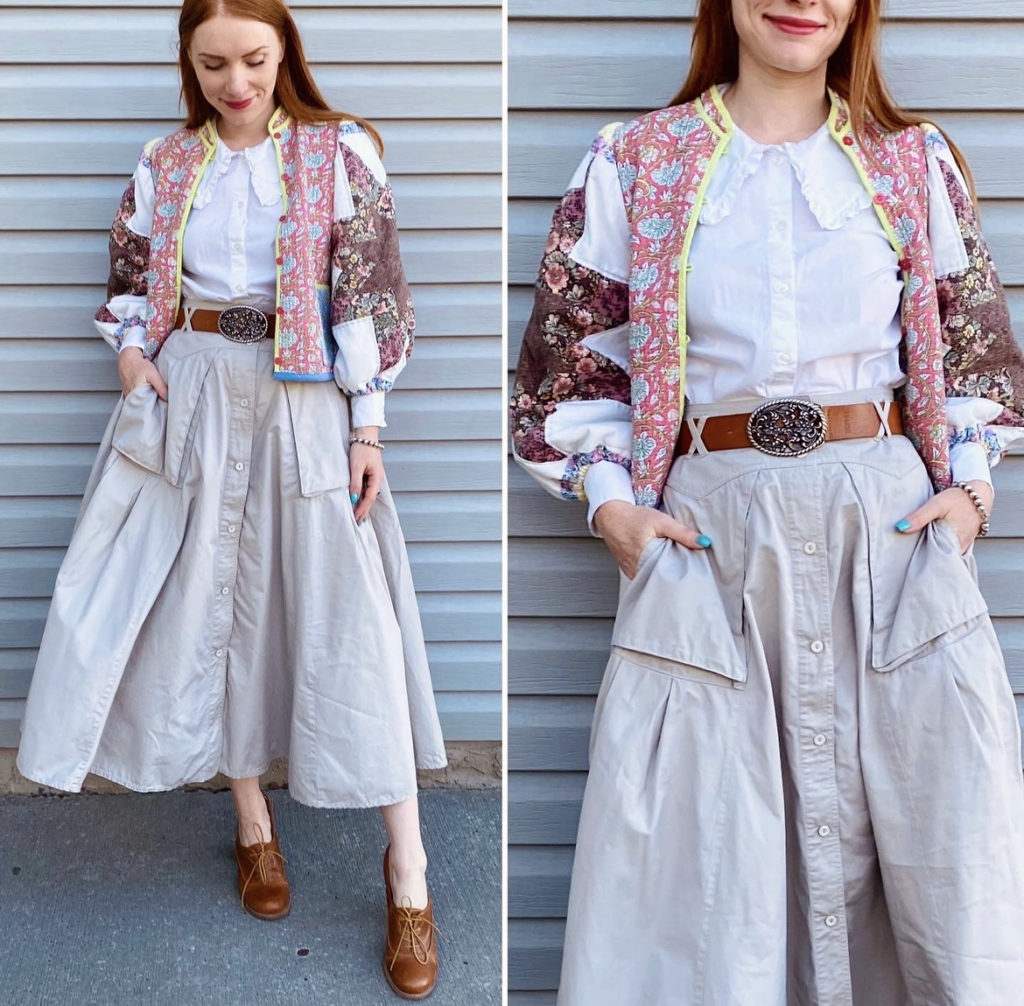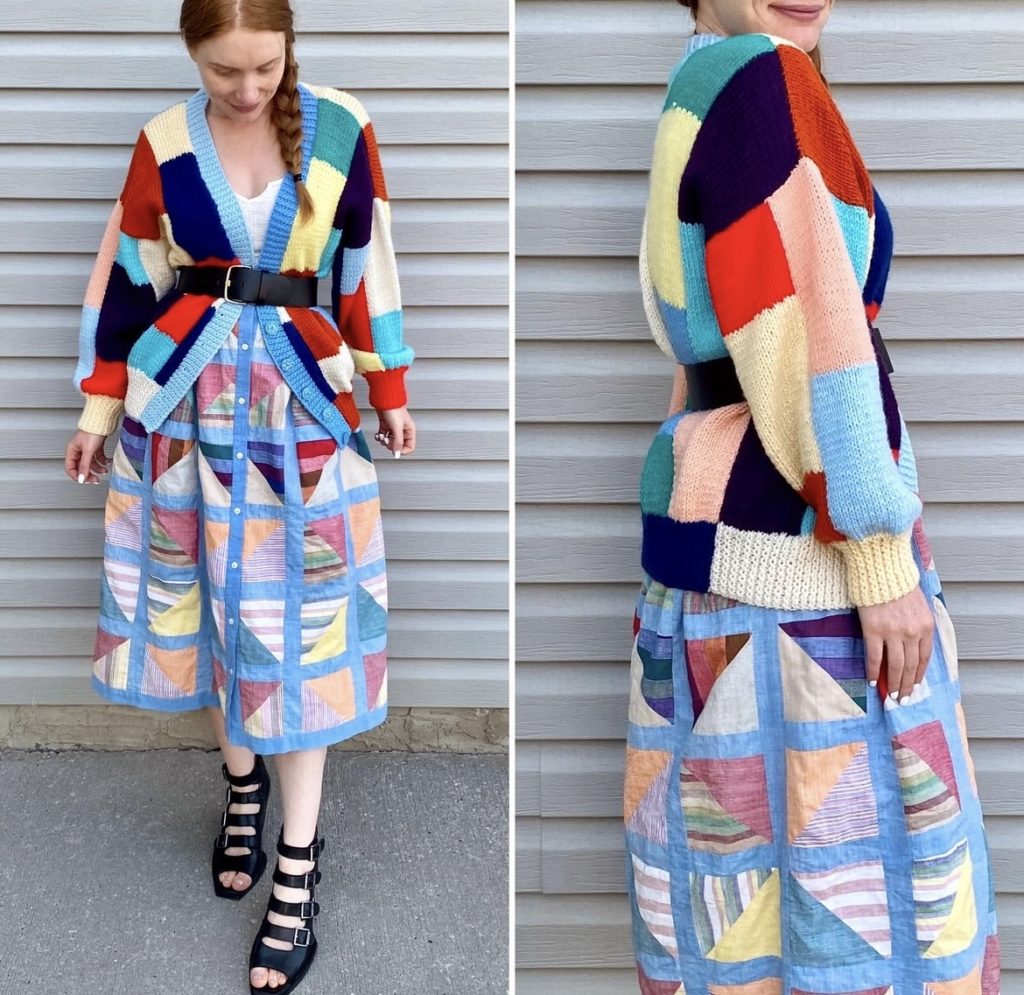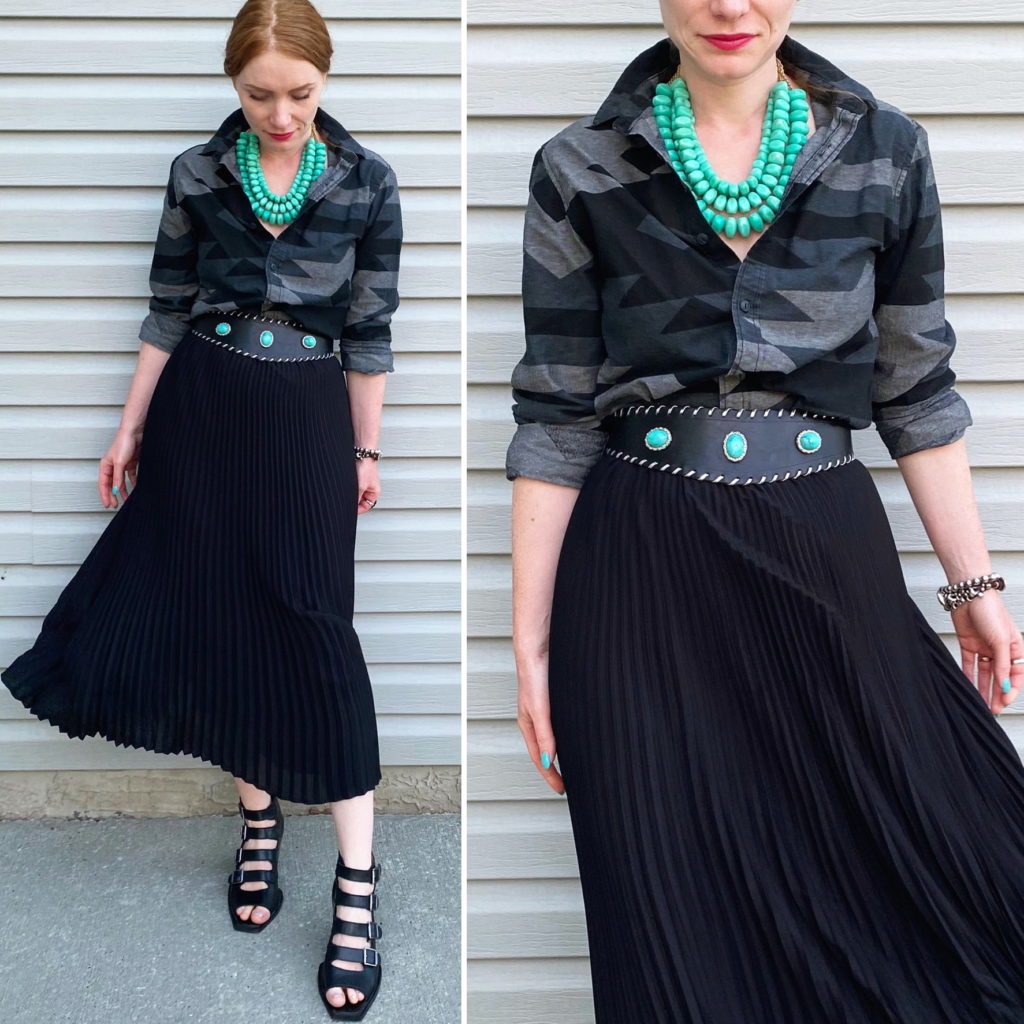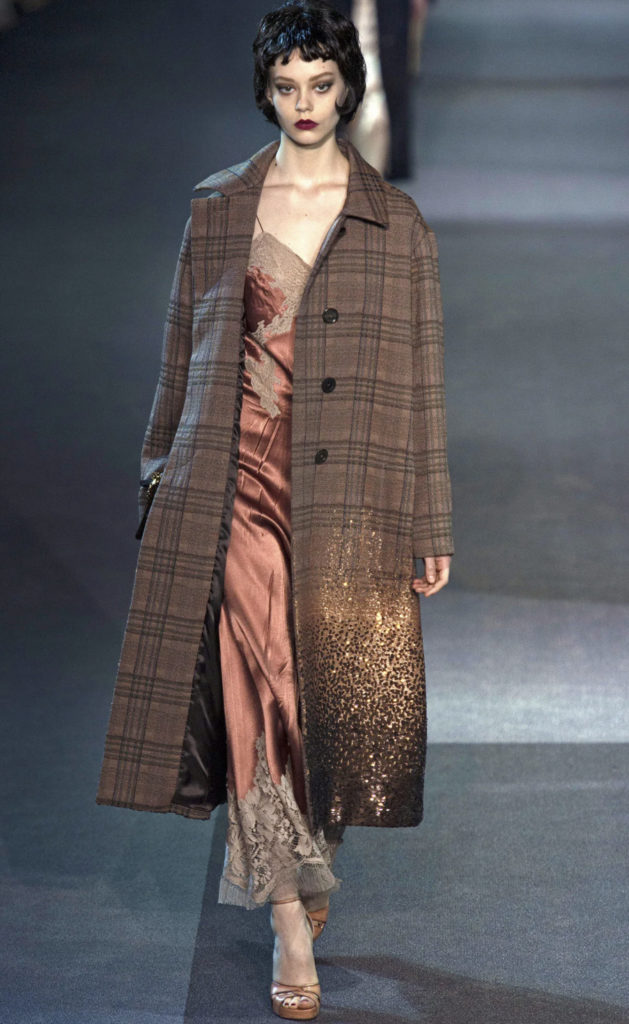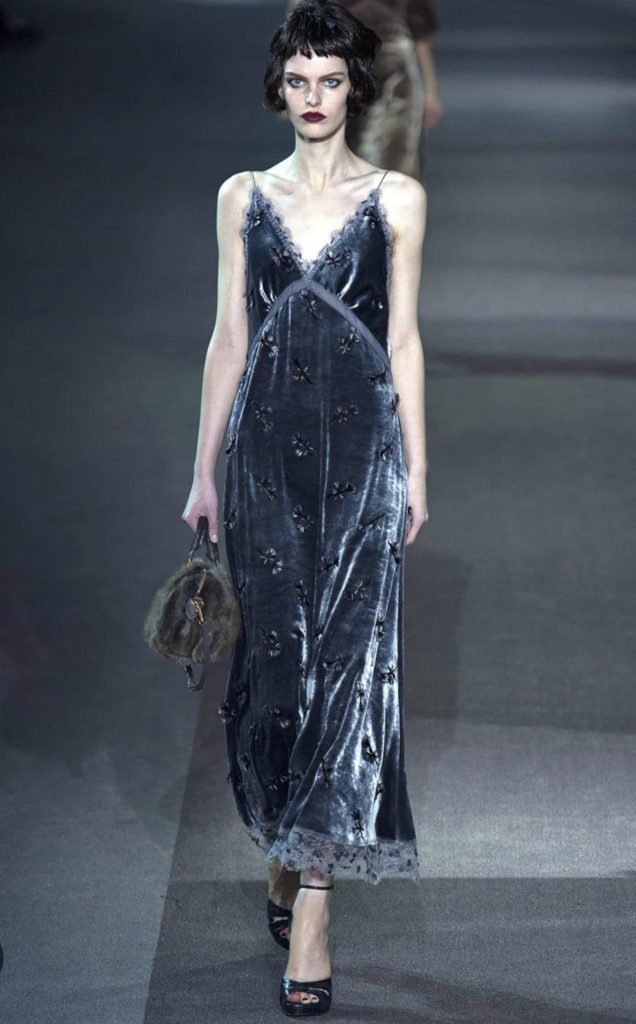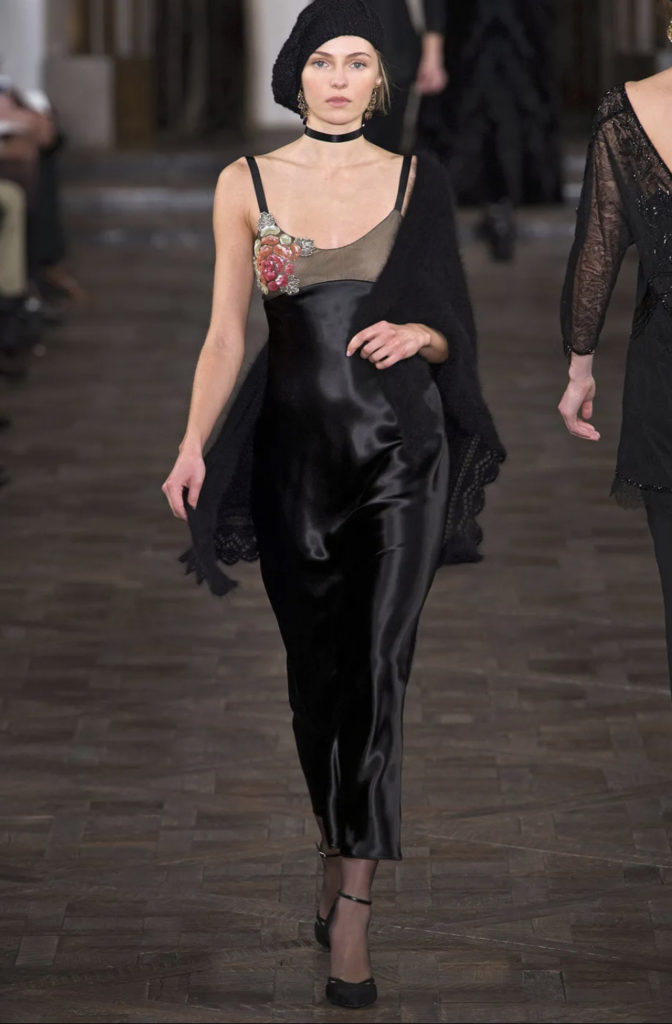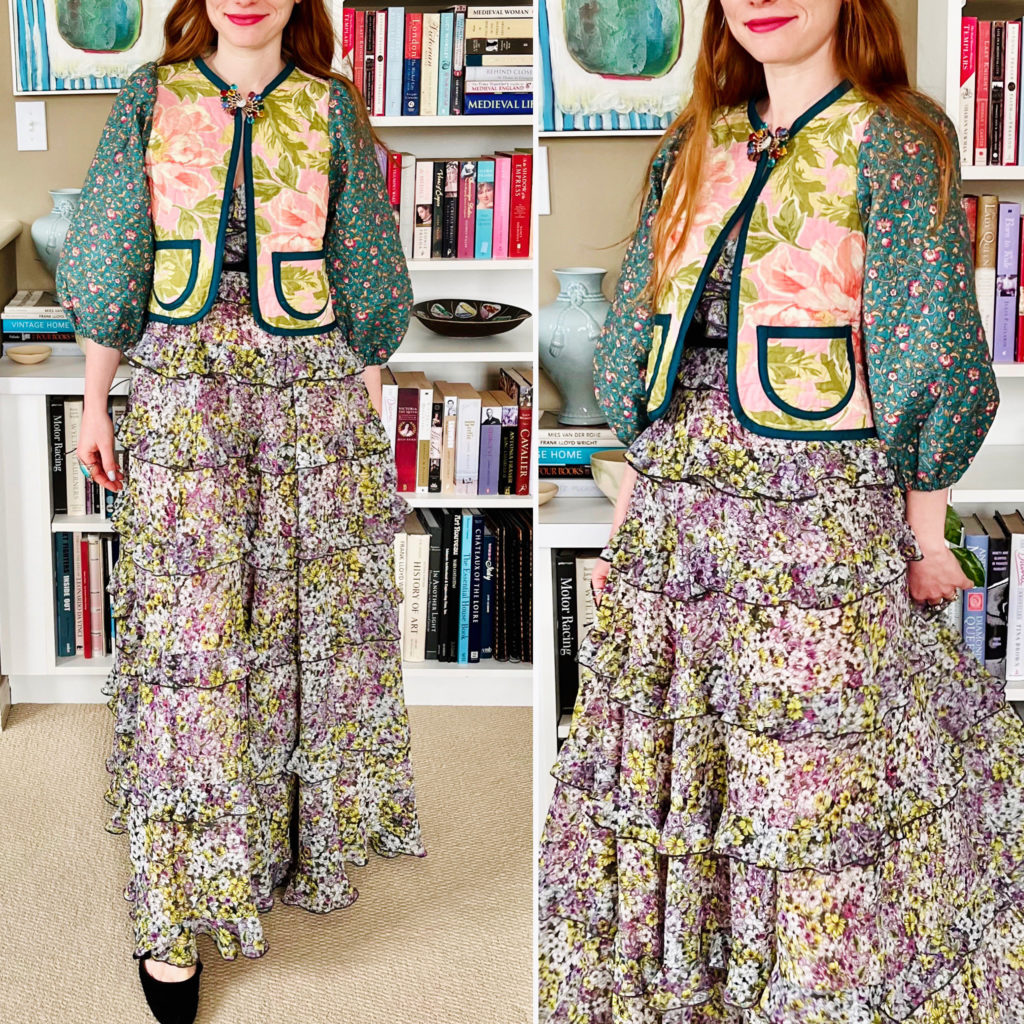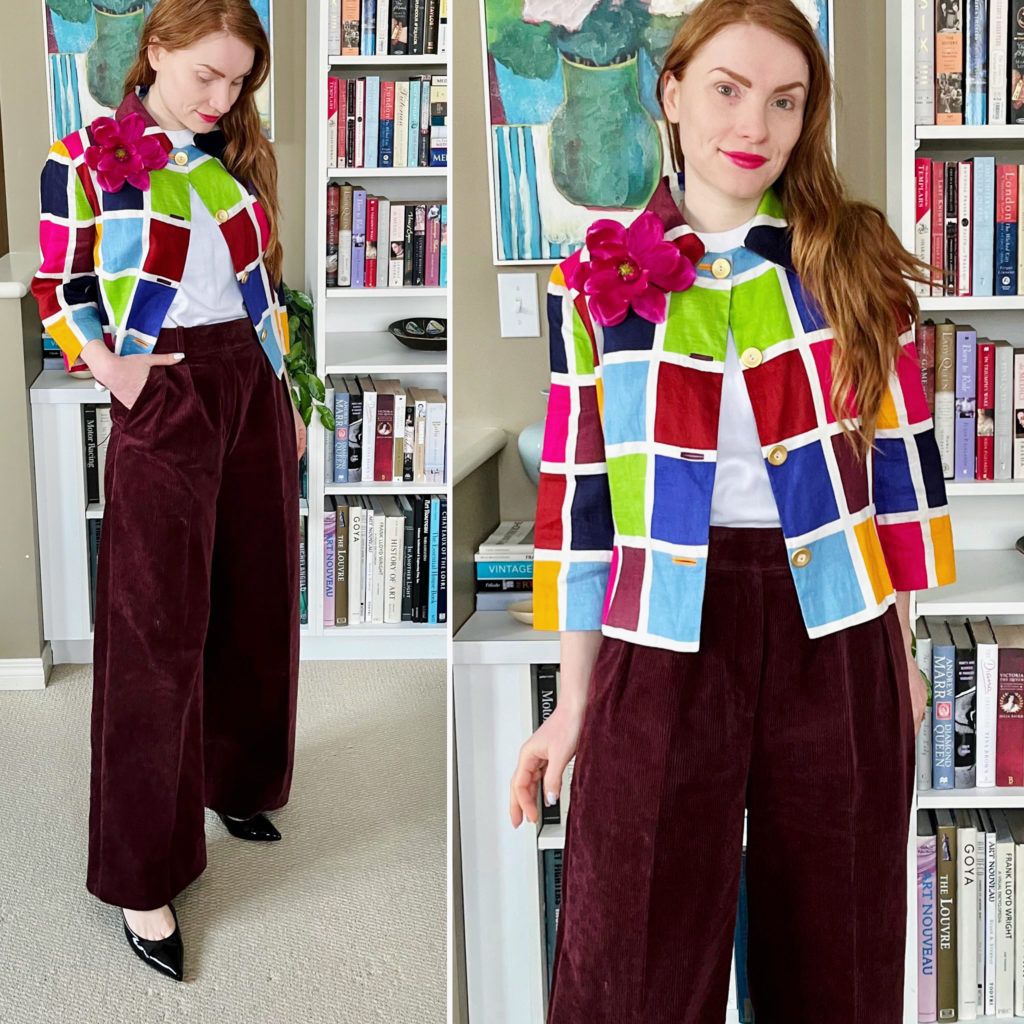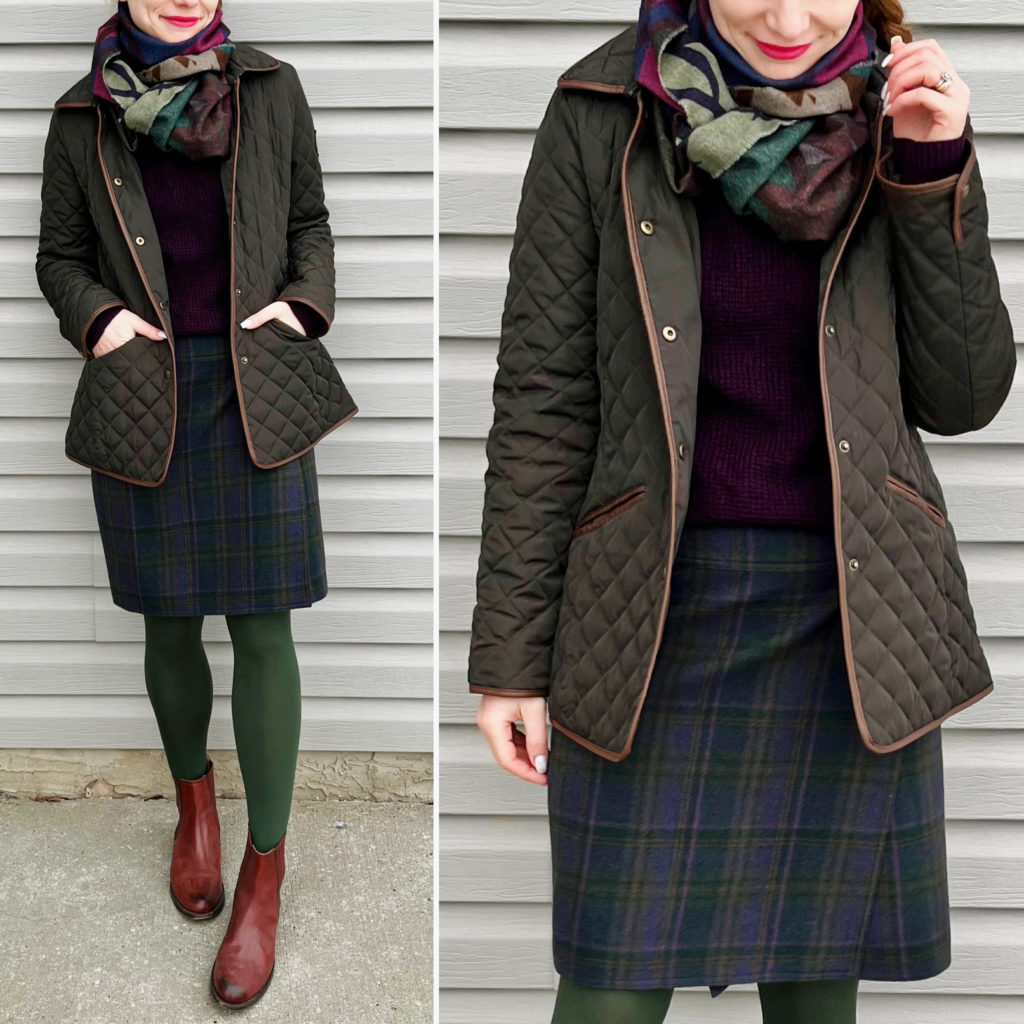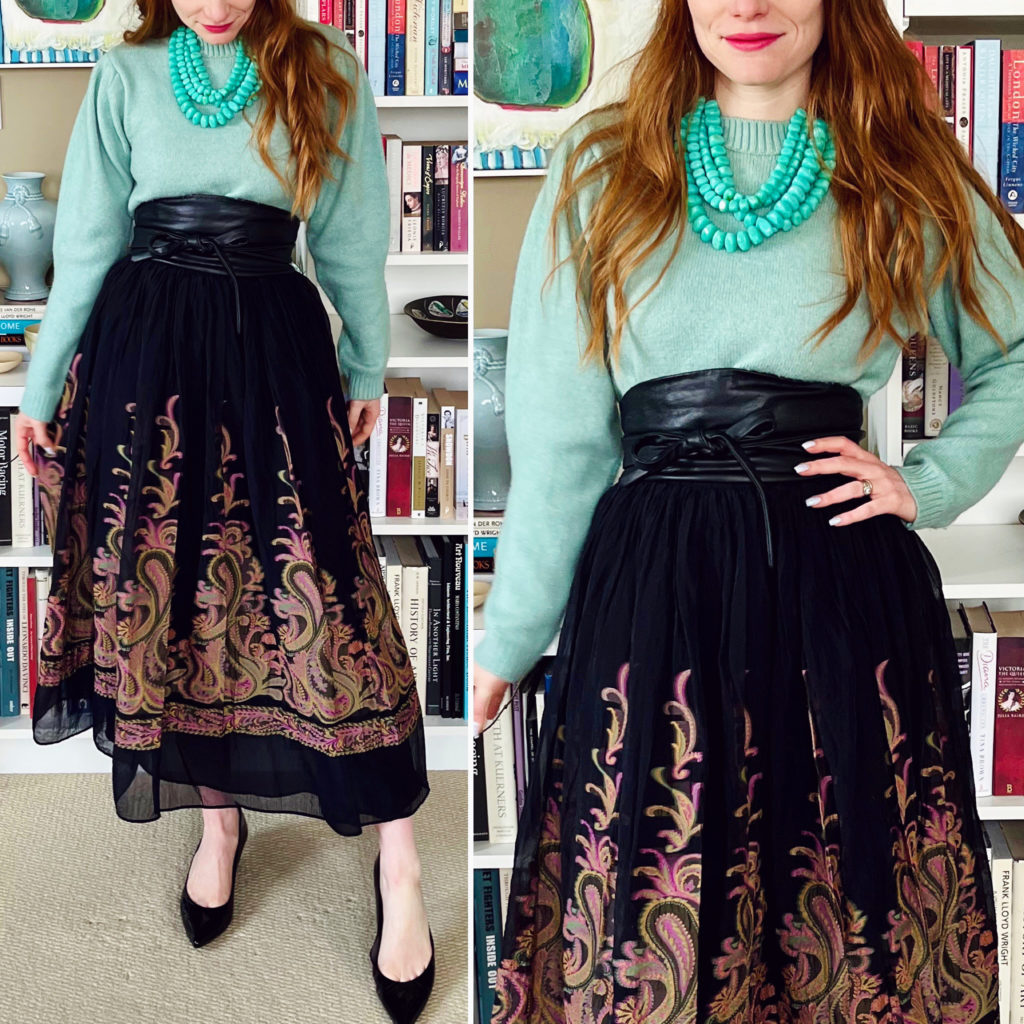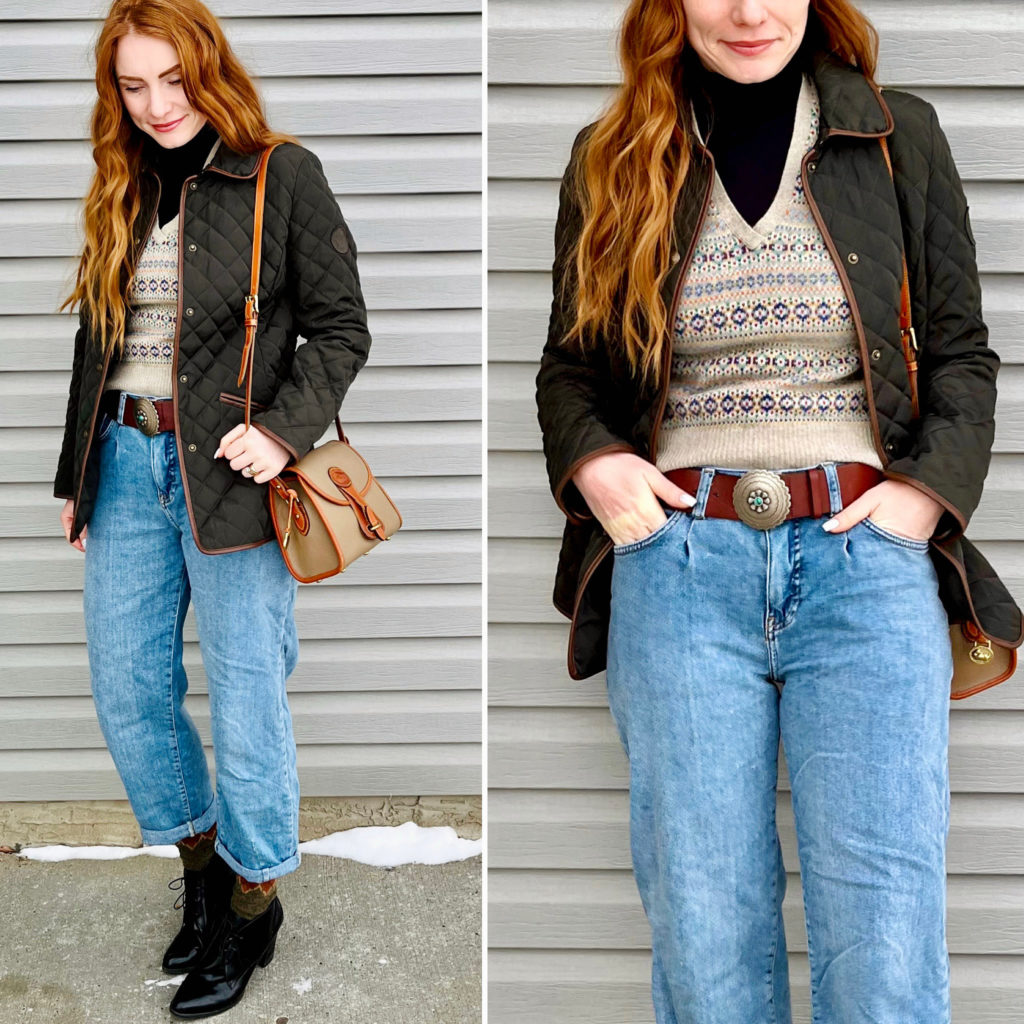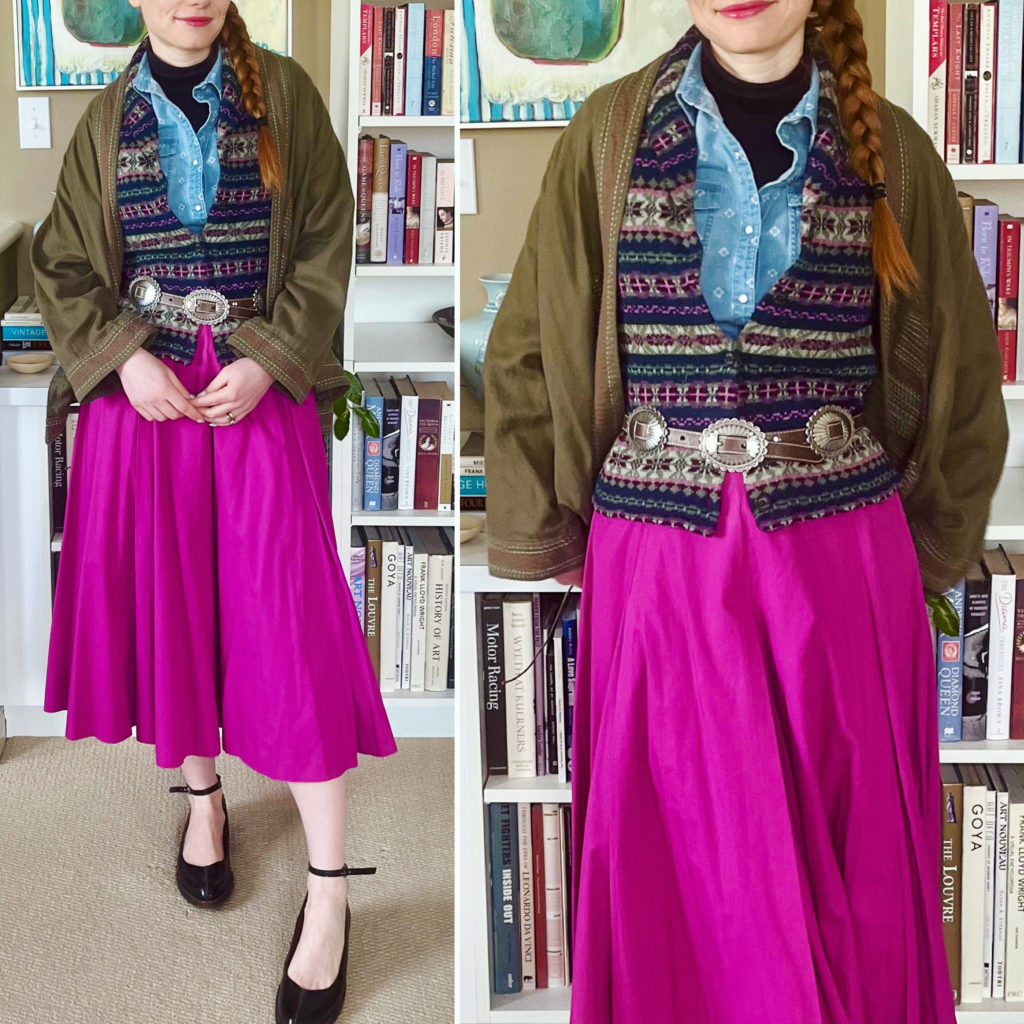
Details: Babaton turtleneck, Tahari shirt, Chaps vest, Nocona belt, Golden jacket, Max & Co skirt, Fluevog shoes (all thrifted)
Thoughts: This outfit was my take on a favourite classic Ralph Lauren ad from the 80s (see below). I had to improvise, since I don’t have the exact pieces or anything super similar, but I think I did pretty well. It seems appropriate that my version is a bit more colourful — although I also love the more muted colour palette in the original. This level of layering is a new obsession of mine; I am trying to push myself creatively when it comes to creating depth through layering of different textures and materials.
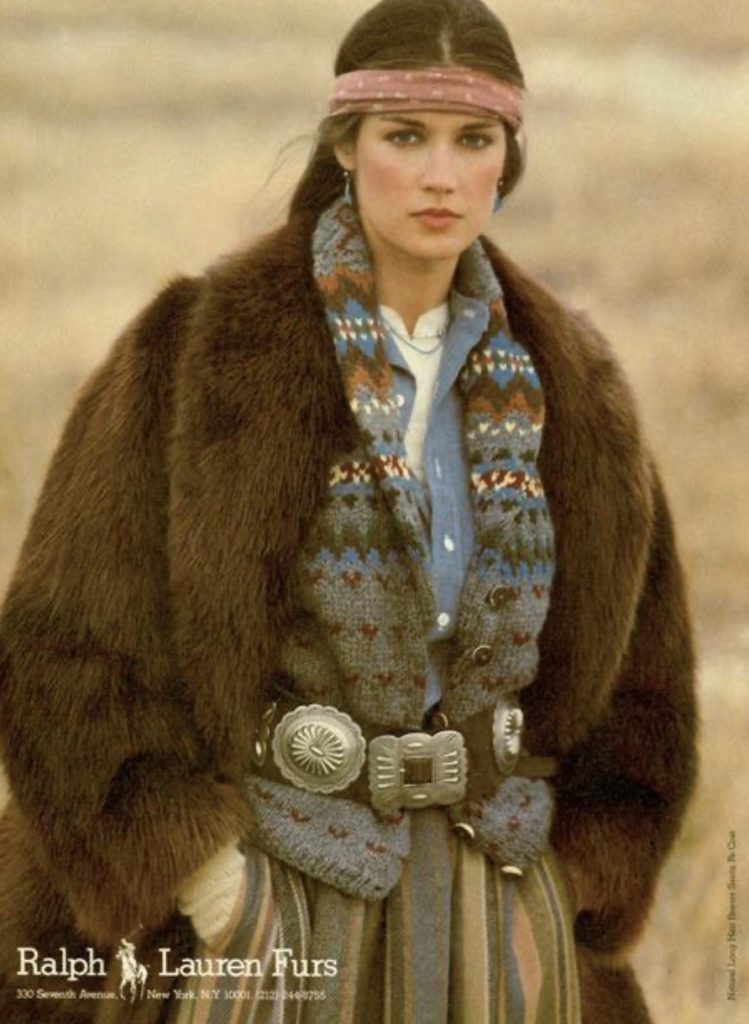
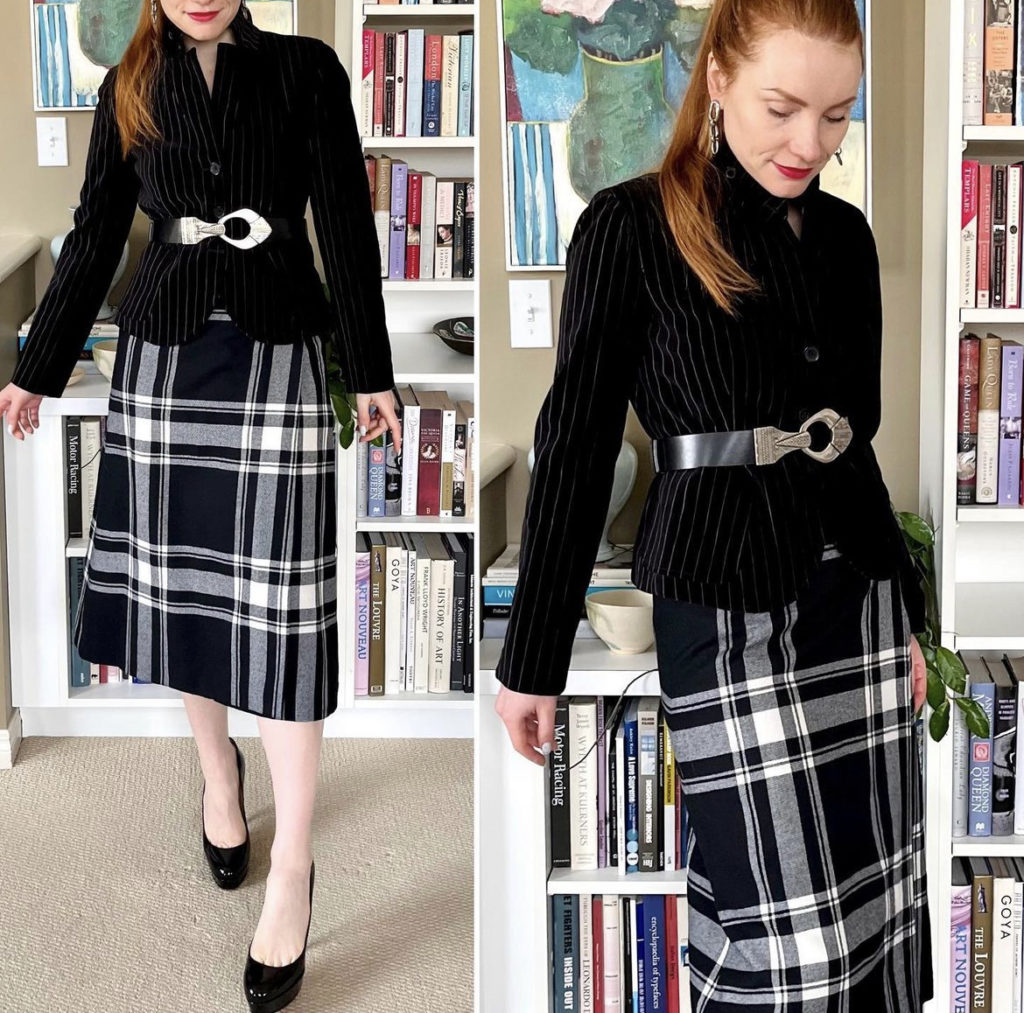
Details: J. Crew blazer, Ralph Lauren skirt, Chico’s belt, Louboutin shoes (all thrifted)
Thoughts: Also inspired by a Ralph Lauren runway look from a few years ago — he uses belts a lot, in different ways like over a jacket. It might not be easy to see in this photo, but there is a bit of pattern mixing happening; the jacket has a very subtle white pinstripe. It’s velvet, which always feels luxe to me, and gives a nice textural contrast to the wool skirt. I’m still loving black & white outfits, as you can see.
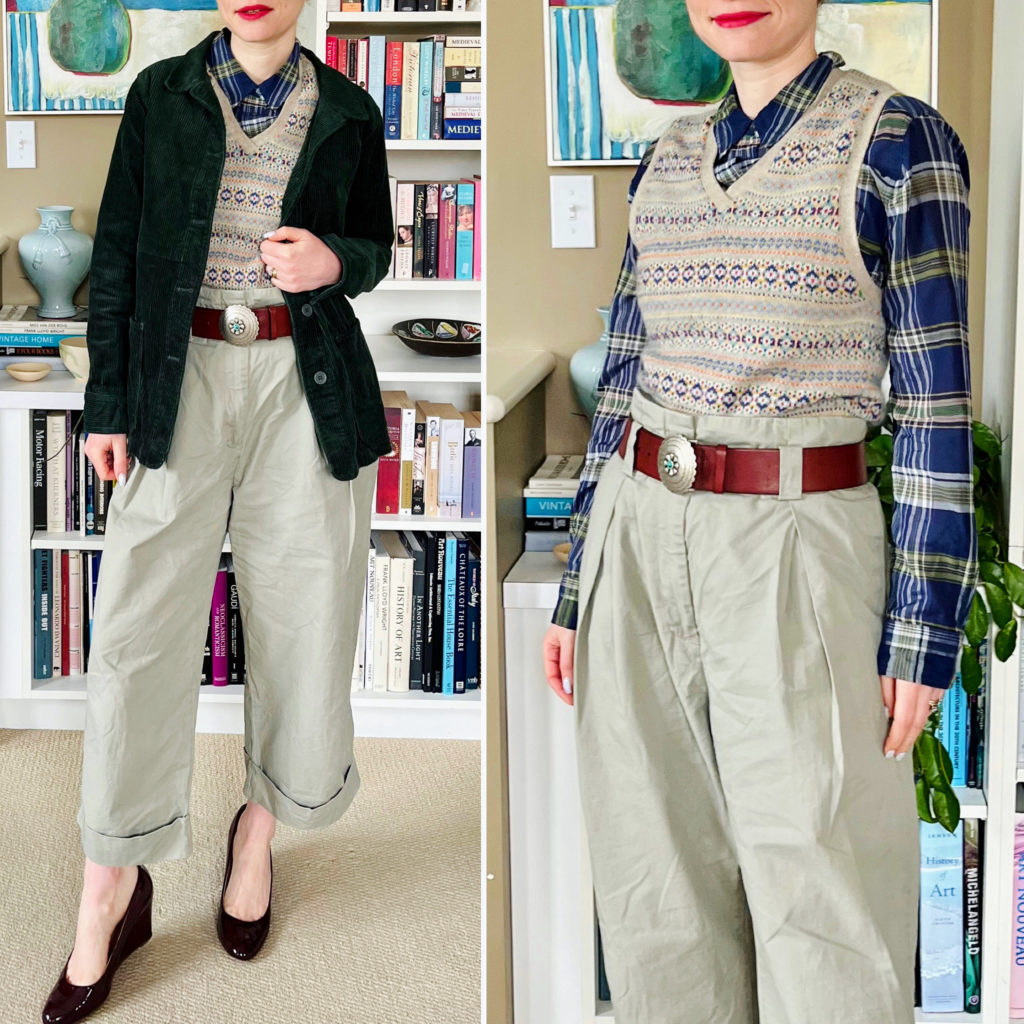
Details: Equipment shirt, H&M pants (both thrifted), Ralph Lauren vest and belt (both Poshmark), Tradlands jacket (thrifted)
Thoughts: This is the most beige you’ll see me wearing, I promise. Still, I think there is enough colour and pattern in the outfit that we can safely say it’s miles away from “vanilla girl” style. Wouldn’t want to be accused of being trendy, hahaha! I recently got this belt on Poshmark, and I love it. It’s got a bit of that southwestern flair, but it’s not too flashy so it’s quite versatile. This outfit is rather professor-on-the-prairie, don’t you think?
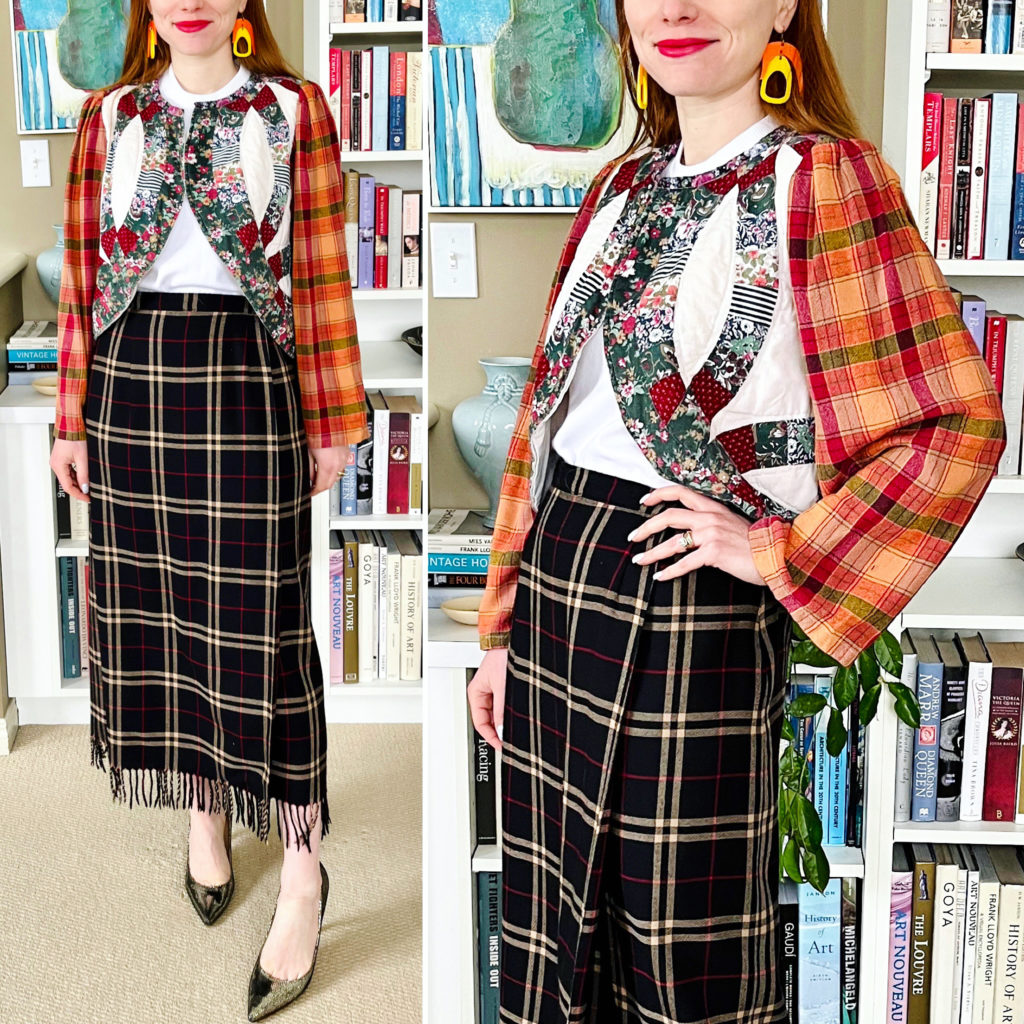
Details: Prairie Trail Goods jacket, French Connection sweater (thrifted), Cleo skirt (thrifted),Warren Steven Scott earrings
Thoughts: Here is another jacket made by my super talented friend, J. I’m slowly building up a collection of upcycled quilted jackets from her, and I love each piece so much. Her eye for pattern mixing is incredible — just look at this jacket. The choice of skirt here was a bit of a wildcard, but I think its plaid is a lovely complement to the plaid sleeves. The black grounds the whole outfit nicely too.
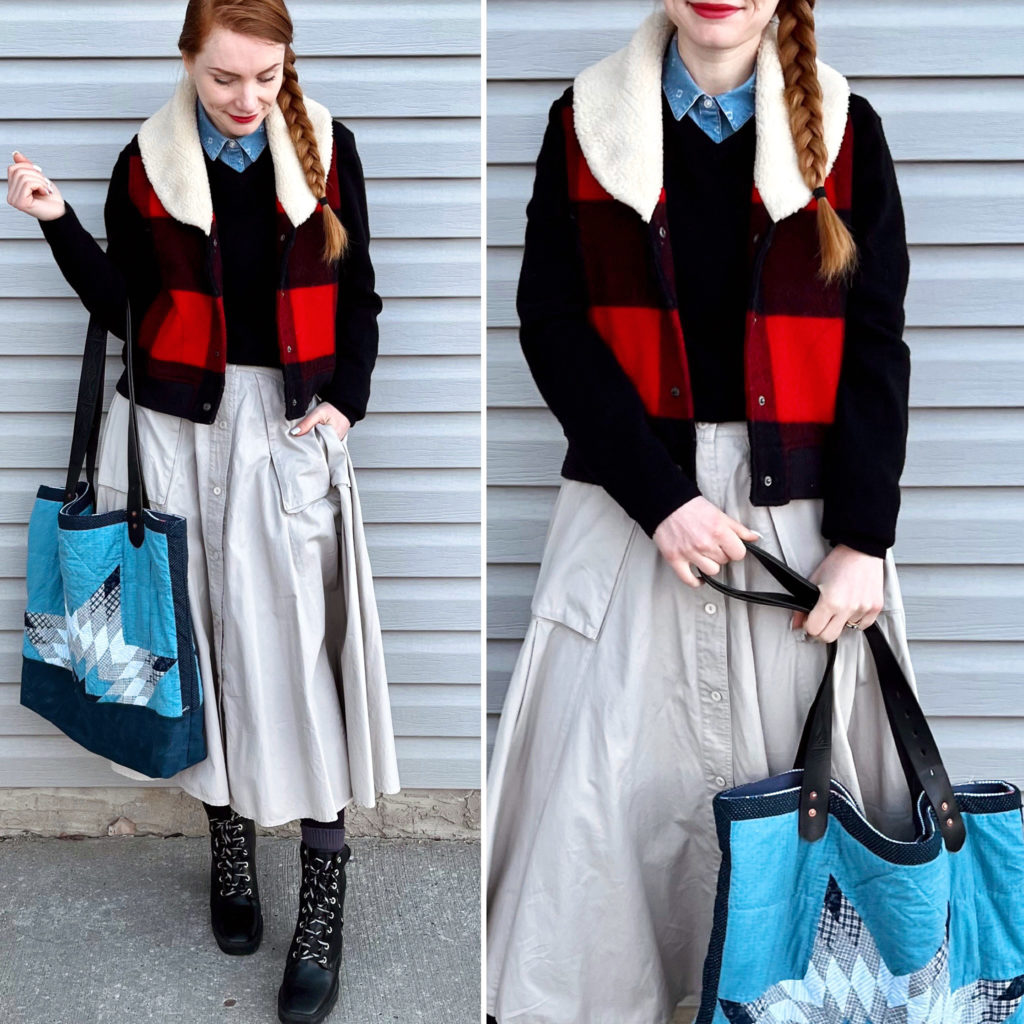
Details: Tahari shirt, Everlane sweater, Woolrich vest, Mexx skirt, Office London boots (all thrifted), Prairire Trail Goods tote
Thoughts: I call this Femme Lumberjack. I’m still obsessed with this Woolrich vest and I wanted to try to mix things up (and away from jeans), so I went with a skirt. I think the tan works well. I did end up adding a bit of blue, via a chambray shirt collar, to accessorize with this marvelous tote. I’m liking this colour story a lot!

